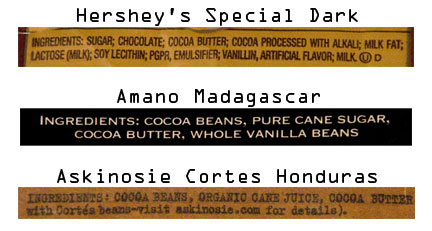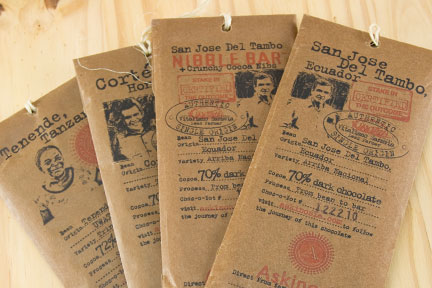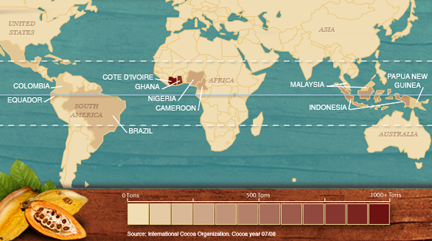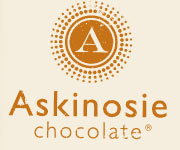Single Origin is a term used to describe chocolate made from beans sourced from one country. The exact history of this is a little unclear, although it seems it all started with El Rey, established in 1929. This Venezuelan chocolate maker sources only locally grown beans, which are considered by many to be some of the most flavorful in all of the world. In 1984 Bonnat Chocolatier first began producing single origin estate chocolate, for their 100th anniversary. Although the concept of single origin was made popular a few years later by another French based chocolatier, Valrhona. Valrhona who is now one of the most wide spread brands in fine chocolate also coined the phrase “grand cru”, which is mostly a marketing term.
Why is single origin chocolate important? Purists believe in what’s called terroir, (pronounced “tare-wahr”) a French term which translates to “taste of place”. Meaning, the relationship between geographical and geological characteristics, along with climate effects the results of the final crop. When a chocolate bar is in its purest form, devoid of additives and you can still tastes notes of fruits or spices, this is due to the terroir. Mind you, this alone does not equal quality chocolate! The particulars of chocolate making starting with the fermentation and drying of beans also play a vital role. Not to mention the craftsmanship of the chocolatier and their process of roasting and conching. All of these important aspects help to create a unique flavor profile for the finished product.
It seems strange now but in truth, the large chocolate companies we grew up with have been purchasing cocoa beans from all over the world and mixing them together. This creates bland blends of chocolate that are masked with large amounts of sugar, flavorings and other additives. These mass producing, mass marketing companies are all about quantity, not quality and are creating a product that is more candy than chocolate. The average consumer knows not the difference, but as tastes evolve and more and more consumers are turning into connoisseurs of fine foods, we start to notice. Once you taste the complex flavor and smooth texture of artisan chocolate you will never forget it!

Comparison of ingredient labels of Hershey's versus two of my favorite artisan brands. As usual, the less ingredients the better.
The basis for the term single origin was not only built on the fact that we can’t get enough of this superior chocolate, but also for it’s principles. If we know where the beans come from, then we know who grows them. Smaller manufacturers of fine chocolate are more frequently cutting out the middle man and going directly to the source. Working one on one with the farmers, they are able to ensure that they have the knowledge and the resources to create ample working conditions and that they are paid fair prices for this laborious product. Otherwise known as fair trade.
In many cases single origin labeling is used loosely within the industry because it vaguely refers, to a country as a whole. Meaning the beans can come from multiple regions and/or plantations within said country. Due to our heightened palate, terroir and the importance of fair trade, sourcing beans from one region or farm within a region has become more common. Therefore, other terms have been introduced in hopes of being more specific such as; pure origin, select origin, or just “origin”. Most honest companies clear up this confusion by just stating on the package directly, the name of the region and/or plantation where the beans were grown to make the bar.

Askinosie not only states the country and region of origin but puts the name and photo of the head farmer right on the package!
I wanted to clear this up to the best of my knowledge as I am always eating and reviewing chocolate from specific places all over the world. The notes that are hidden within the obvious chocolate flavor excite and intrigue me. I also strongly believe in the importance of understanding and appreciating all of the hard work that goes into making some of the world’s best chocolate. I have also been researching and experimenting with using some of this chocolate for my own creations. For the past year I have been purchasing my chocolate couverture from a Swiss company called Felchlin and am proud to say that it is in fact made exclusively from Venezuelan sourced beans. I will be talking more directly about them and about this chocolate in future post.
I hope you are now more informed and inspired to try some of this dazzling, purist, chocolate of origin, whether it be from me or from another great company. Below are few quick links to some of my favorite American chocolate makers! Bon appetit!



